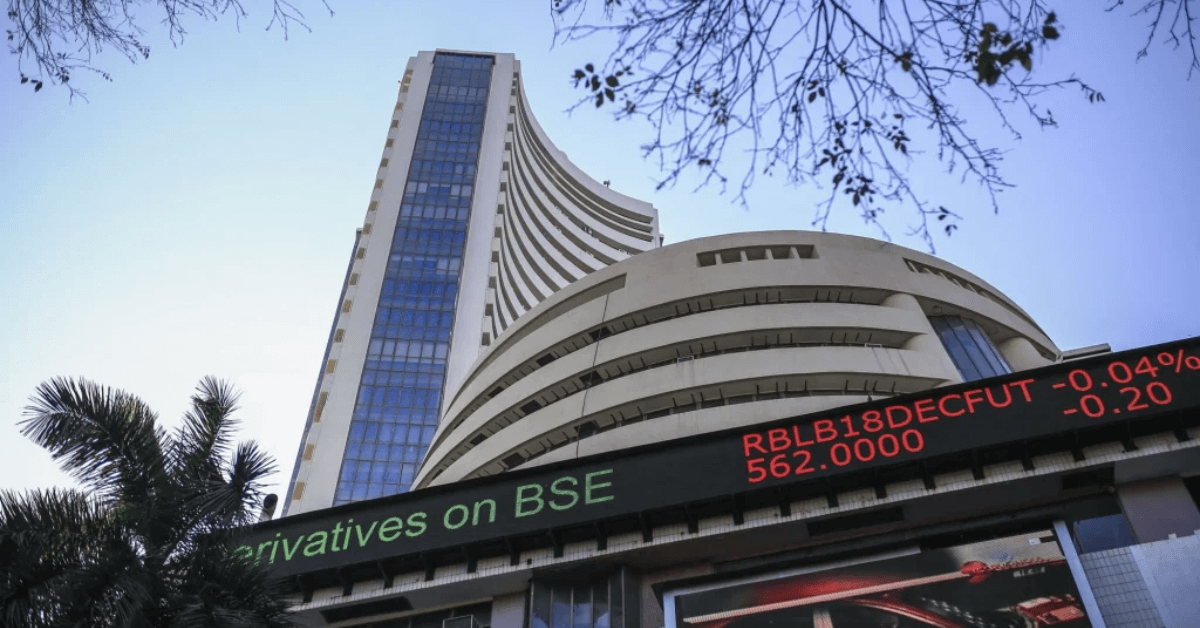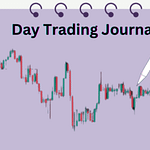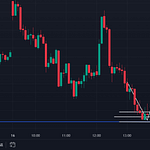The Indian stock market is one of the world’s most dynamic and fastest-growing markets. It has attracted the attention of domestic and international investors, making it an important component of the global financial ecosystem.
This blog post provides an in-depth overview of the Indian stock market, including its history, structure, key players, and factors affecting its growth.
Table of Contents
Toggle1. History of the Indian Stock Market
The history of the Indian stock market dates back to the 18th century when the East India Company started trading in loan securities. However, the market as we know it today began to take shape in the 19th century.
Bombay Stock Exchange (BSE):
Established in 1875, BSE is the oldest stock exchange in Asia. It started under a banyan tree on Dalal Street in Mumbai, where stockmen used to gather to trade. Over the years, it grew into a formal institution, laying the foundations of the Indian stock market.
National Stock Exchange (NSE):
The National Stock Exchange was established in 1992 as a more modern and technology-driven exchange. It introduced electronic trading and replaced the traditional open cry system. NSE quickly gained popularity and today, it closely competes with BSE regarding trading volume and market capitalization.
2. Structure of the Indian Stock Market
The Indian stock market is structured into two primary segments:
Primary Market:
Companies raise capital in the primary market by issuing new shares through initial public offerings (IPOs). It is the first point of contact between companies and investors. Companies offer their shares to the public for the first time and the money raised is used for business expansion, debt repayment, or other corporate purposes.
Secondary Market:
The secondary market is where existing shares are traded between investors. It is a marketplace where investors buy and sell shares on stock exchanges like BSE and NSE. Stock prices in the secondary market fluctuate based on supply and demand, investor sentiment, and various economic factors.
3. Key Indices of the Indian Stock Market
Stock indices are an important part of the stock market as they reflect the overall performance of the market. Major Indices of the Indian Stock Market are:
S&P BSE Sensex:
Sensex, short for Sensex Index is the benchmark index of BSE. It includes the 30 largest and most actively traded companies on BSE. The Sensex is a barometer of the Indian economy and is widely tracked by investors.
Nifty 50:
Nifty 50 is the benchmark index of NSE. It includes 50 of the largest and most liquid companies listed on the NSE. Nifty 50 is used as a benchmark for various financial products including mutual funds and exchange-traded funds (ETFs).
4. Key Players in the Indian Stock Market
Several key players contribute to the functioning and growth of the Indian stock market:
Investors:
Investors are individuals or organizations who buy and sell shares in the stock market. They include retail investors, institutional investors, foreign institutional investors (FIIs), and domestic institutional investors (DIIs).
Stock Brokers:
Stock brokers act as intermediaries between investors and stock exchanges. They facilitate the buying and selling of shares on behalf of investors. Stock brokers earn commissions for their services.
Regulator:
The Securities and Exchange Board of India (SEBI) is the primary regulator of the Indian stock market. SEBI ensures that the stock market operates in a fair, transparent, and efficient manner. It protects the interests of investors by enforcing rules and guidelines.
Stock Exchange:
Stock exchanges like BSE and NSE provide a platform for trading of shares. They ensure that business is run smoothly and all transactions are carried out efficiently.
Depositories:
Depositories like National Securities Depository Limited (NSDL) and Central Depository Services Limited (CDSL) hold securities in electronic form. They facilitate the transfer of ownership of securities between investors.
5. Investment Options in the Indian Stock Market
Here is a detailed and simple explanation of the various investment options available in the Indian stock market:
I. Direct Equity Investment:
What It Is: Buying shares of individual companies directly from the stock market.
How It Works: You open a Demat and trading account with a stockbroker, select the stocks you want to invest in, and purchase them.
Benefits: Offers the potential for high returns if the company performs well. You own a part of the company.
Risks: High risk due to market volatility. Requires good knowledge of the market and companies.
II. Mutual Funds:
What It Is: A pooled investment where money from multiple investors is combined to invest in a diversified portfolio of stocks.
How It Works: Managed by professional fund managers, mutual funds invest in various stocks according to the fund’s objectives.
Benefits: Diversification reduces risk, and it’s managed by experts, making it suitable for beginners.
Risks: Returns are subject to market performance and fund manager decisions.
III. Exchange-Traded Funds (ETFs):
What It Is: A type of mutual fund that is traded on stock exchanges like individual stocks.
How It Works: ETFs track an index, commodity, or basket of assets and can be bought or sold during market hours.
Benefits: Combines the diversification of mutual funds with the flexibility of stock trading. Usually has lower fees.
Risks: Similar to mutual funds, the value depends on the underlying assets. May have less liquidity compared to individual stocks.
IV. Initial Public Offerings (IPOs):
What It Is: The first time a company offers its shares to the public.
How It Works: Investors can buy shares directly from the company during the IPO before they are available for public trading.
Benefits: Opportunity to invest early in a company with growth potential. Can offer significant returns if the company performs well.
Risks: IPOs are risky because the company’s future performance is uncertain. Initial hype can lead to overvaluation.
V. Derivatives (Futures and Options):
What It Is: Financial contracts whose value is derived from an underlying asset like a stock.
How It Works: Investors use derivatives to speculate on the future price of a stock or hedge against potential losses.
Benefits: Can be used to protect your portfolio or make speculative gains with less capital investment.
Risks: Highly complex and risky. Can lead to significant losses if not used carefully.
Learn here about options: Options Trading Wisdom
VI. Bonds:
What It Is: Fixed-income securities issued by companies or the government, offering a regular interest payout.
How It Works: When you buy a bond, you are lending money to the issuer (government or company) in exchange for periodic interest payments.
Benefits: Lower risk compared to stocks, and provides a steady income stream. Useful for portfolio diversification.
Risks: Lower returns compared to equities. Interest rates and issuer creditworthiness can impact bond prices.
VII. Index Funds:
What It Is: A type of mutual fund that aims to replicate the performance of a specific index like the Nifty 50 or Sensex.
How It Works: The fund invests in all or a representative sample of the securities that make up the index.
Benefits: Lower management fees since it’s passively managed. It provides broad market exposure.
Risks: Follows market trends closely, so it offers no potential to outperform the index. Returns are subject to market fluctuations.
VIII. Systematic Investment Plans (SIPs):
What It Is: A method of investing in mutual funds by contributing a fixed amount regularly (monthly, quarterly, etc.).
How It Works: You set up an automatic payment into a mutual fund, allowing you to invest consistently over time.
Benefits: Helps in averaging out the purchase cost and reducing market timing risk. Encourages disciplined investing.
Risks: Subject to market risks as the invested mutual fund’s value fluctuates. Long-term commitment is required for better results.
Each of these investment options comes with its own set of advantages and risks. It’s essential to understand your financial goals, risk tolerance, and time horizon before choosing the best investment strategy for you.
6. Factors Influencing the Indian Stock Market
Several factors influence the movement of the Indian stock market:
Economic Indicators: Economic indicators like GDP growth, inflation, interest rates, and industrial production have a significant impact on the stock market. Positive economic indicators often lead to a bullish market, while negative indicators can cause the market to decline.
Corporate Earnings: The financial performance of companies plays a crucial role in determining stock prices. Strong earnings reports lead to an increase in stock prices, while weak earnings reports can cause prices to fall.
Global Markets: The Indian stock market is not immune to global events. Developments in major economies like the United States, Europe, and China can have a ripple effect on the Indian market. For example, a downturn in the US market can lead to a sell-off in Indian stocks.
Political Stability: Political stability and government policies have a direct impact on investor sentiment. Stable governments and pro-business policies are generally viewed positively by investors, leading to a rise in stock prices.
Foreign Investment: Foreign Institutional Investors (FIIs) play a significant role in the Indian stock market. Inflows of foreign capital can drive up stock prices, while outflows can lead to a market decline.
Market Sentiment: Investor sentiment, often driven by news, rumors, and market trends, can cause short-term fluctuations in stock prices. Sentiment can be influenced by factors like economic data releases, corporate announcements, and geopolitical events.
7. Types of Stocks in the Indian Market
Stocks in the Indian market can be categorized into various types based on different factors:
Large-Cap, Mid-Cap, and Small-Cap Stocks: These categories are based on the market capitalization of companies. Large-cap stocks are those with the largest market capitalization, followed by mid-cap and small-cap stocks. Large-cap stocks are generally considered safer investments, while mid-cap and small-cap stocks offer higher growth potential but come with higher risk.
Blue-Chip Stocks: Blue-chip stocks are shares of well-established and financially sound companies with a history of reliable performance. These stocks are considered stable and are often chosen by conservative investors.
Penny Stocks: Penny stocks are low-priced stocks of small companies with high risk and potential for high returns. These stocks are highly speculative and are not recommended for inexperienced investors.
Growth Stocks: Growth stocks are shares of companies that are expected to grow at an above-average rate compared to other companies. These stocks often reinvest their earnings into the business rather than paying dividends.
Dividend Stocks: Dividend stocks are shares of companies that pay regular dividends to shareholders. These stocks are favored by investors seeking a steady income stream.
8. Risks and Challenges in the Indian Stock Market
Investing in the stock market comes with its share of risks and challenges:
Market Volatility: The stock market is inherently volatile, with prices fluctuating based on various factors. Investors need to be prepared for short-term losses and have a long-term perspective.
Economic Downturns: Economic downturns, such as recessions, can lead to significant declines in the stock market. Investors need to be cautious during such periods and avoid panic selling.
Corporate Fraud: While SEBI has implemented strict regulations to prevent corporate fraud, it is not eliminated. Investors should conduct thorough research before investing in any company.
Regulatory Changes: Changes in government policies and regulations can impact the stock market. Investors need to stay informed about regulatory developments that may affect their investments.
Global Factors: As mentioned earlier, global events can influence the Indian stock market. Investors need to be aware of global economic and political developments that may impact their investments.
9. Future Outlook of the Indian Stock Market
The future of the Indian stock market looks promising. Several factors contribute to this positive outlook:
Economic Growth: India is one of the fastest-growing economies in the world. Continued economic growth is expected to drive corporate earnings and stock prices higher.
Digital Transformation: The increasing adoption of technology in the financial sector is expected to make the stock market more accessible to retail investors. Online trading platforms and mobile apps have made it easier for individuals to participate in the market.
Foreign Investment: India remains an attractive destination for foreign investors due to its growth potential and stable political environment. Continued foreign investment is expected to support the stock market’s growth.
Regulatory Reforms: SEBI continues to introduce reforms aimed at improving market transparency, investor protection, and ease of trading. These reforms are likely to enhance the overall efficiency of the market.
Rising Financial Literacy: As financial literacy increases, more individuals are expected to invest in the stock market. This will contribute to the market’s expansion and provide more liquidity.
Conclusion
The Indian stock market is a vibrant and dynamic entity that is crucial to the country’s economy. It offers a wide range of investment opportunities, from blue-chip stocks to high-risk, high-reward options like penny stocks.
However, investing in the stock market requires careful planning, research, and an understanding of the risks involved.
As India continues to grow economically, the stock market is expected to remain a key avenue for wealth creation for both domestic and international investors.







